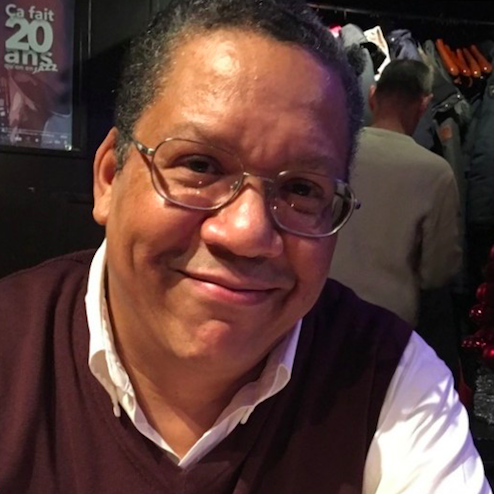
A lack of access to safe water — coupled with socioeconomic disparities, aging infrastructure and natural disasters — is accelerating a downward spiral in quality of life for more than 2 million Americans, according to a new Xylem report.
The global water technology company’s analysis looks to raise public awareness of a growing water crisis in the U.S., said Austin Alexander, Xylem’s vice president for sustainability and social impact. It spotlights the increasing challenges rural communities in the United States face because of limited water access and poor water quality.
“Once you have awareness of the issue, then we can start talking about solutions and funding and all those things that can help fill the gap,” Alexander said. “But we really are just in a moment, I think, of many Americans not realizing the extent of the issue in our own backyard.”
A rural water crisis is brewing in our own backyards
More than 46 million Americans, 15 percent of the total U.S. population, live in rural areas, according to the 2020 Census. How they access water, the quality of that water, and if they get water at all is far from certain.
Persistent and serious water quality problems are increasingly common throughout the U.S. In both urban and rural areas, deteriorating water infrastructure and ineffective water treatment facilities can cause contamination in water flowing through the tap. Rural residents who get their water from wells are also at risk, as agricultural runoff, pollutants, and stormwater can seep in and cause contamination. As groundwater levels decline across the country, a growing number of wells are also at risk of running dry.
In addition to the 2 million Americans without access to safe drinking water, millions more might be exposed to contaminated water from wells and small systems that are not regulated by the Environmental Protection Agency (EPA).
The circumstances for water systems covered by EPA regulations are not much better. From 2016 to 2019, nearly 130 million U.S. residents got their drinking water from systems that violated the federal Safe Water Drinking Act, according to an analysis of 50,000 active community water systems conducted by the Natural Resources Defense Council. Small water systems — those that serve less than 3,300 people in mainly rural communities — were responsible for more than 80 percent of all violations.
What can we do?
Xylem’s report offers a range of recommendations for individuals, businesses, nonprofits and governments looking to address these problems. The actionable steps include increasing investment in water infrastructure and expanding access to financing for rural water systems. Local tax dollars alone are generally not enough for small communities to finance water infrastructure upgrades. While state and federal aid programs exist, they're often competitive and fall short of what's needed, experts say. The report calls out awareness-building and public-private partnerships as a means of improving infrastructure in rural communities and filling the existing gaps.
The company also pinpoints smart water technology as having high potential for rural communities. As TriplePundit's Kate Zerrenner has previously reported, "Having a smart system in place can provide real-time monitoring to respond to emergency situations and, optimally, mitigate damage and enhance emergency response time as well as improve the speed of recovery." But again, rural communities need funding to put such systems into place.
On that front, Xylem has also taken steps to address the water crisis itself. The company works closely with government officials and advocacy groups, such as the Water Systems Council (WSC), on public policy to solve domestic water challenges.
Along with the WSC, Xylem helped lobby Congress for the 2016 passage of the WIIN Act, which includes provisions to help small and economically disadvantaged communities improve access to safe, reliable water. The company brings water to additional families in need through its Watermark program in partnership with the WSC’s nonprofit arm Water Well Trust.
Xylem also works with the Chris Long Foundation’s Waterboys initiative and the Water Well Trust to bring further awareness to domestic water issues. In 2021, their partnership installed a new well for a family in Bertram, Texas, who lived without running water for nearly four years after their existing well collapsed. The partnership has completed similar projects in Oregon, Virginia, North Carolina, Illinois, Georgia and Missouri.
Public awareness sparks action on the water crisis
The Xylem report examines the American dimensions of a growing global problem that is becoming more acute and disruptive. About 2 billion people on the planet lack access to safe drinking water, and 3.6 billion lack access to safely managed sanitation, according to the World Bank.
“Gaps in access to water supply and sanitation, growing populations, more water-intensive patterns of growth, increasing rainfall variability, and pollution are combining in many places to make water one of the greatest risks to economic progress, poverty eradication and sustainable development,” an overview from the World Bank reads.
Despite these challenges, Alexander is hopeful that increased public awareness of the water crisis could help spark more action to find and implement solutions.
“I don’t think we’ve seen a moment in time where the water crisis has been in the headlines and gaining so much attention as it is today,” she said. “We’re on the precipice of a mindset change among the general public that these issues are real, they’re here and we have to address them.”
Image credit: Steve Johnson/Pexels

Gary E. Frank is a writer with more than 30 years of experience encompassing journalism, marketing, media relations, speech writing, university communications and corporate communications.














